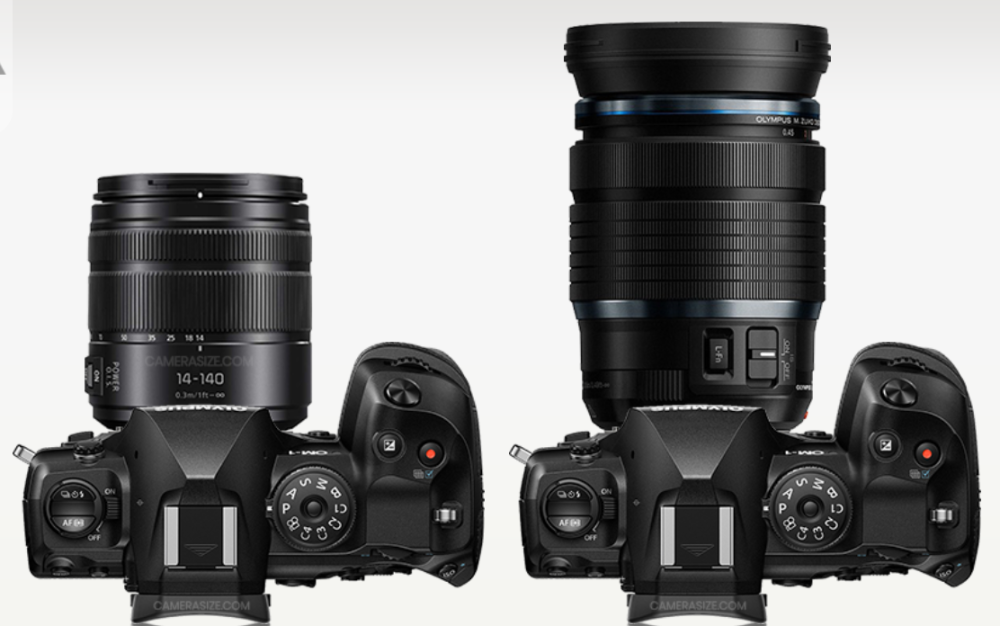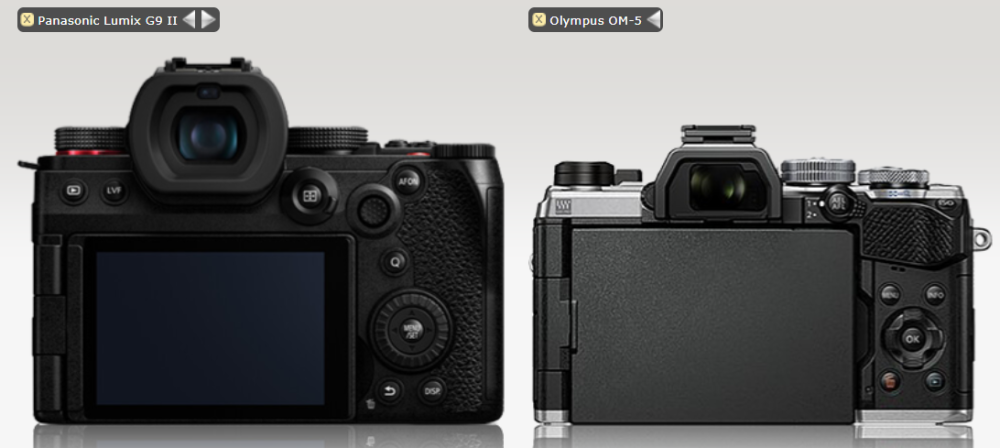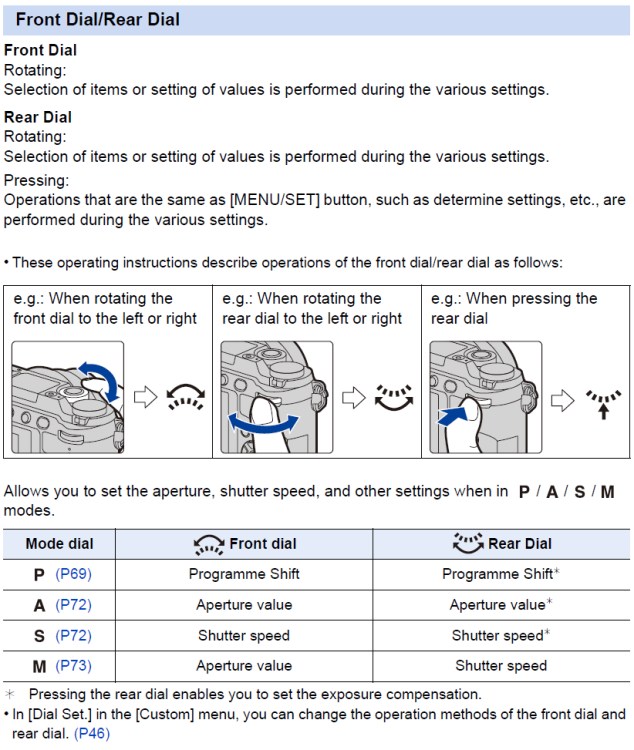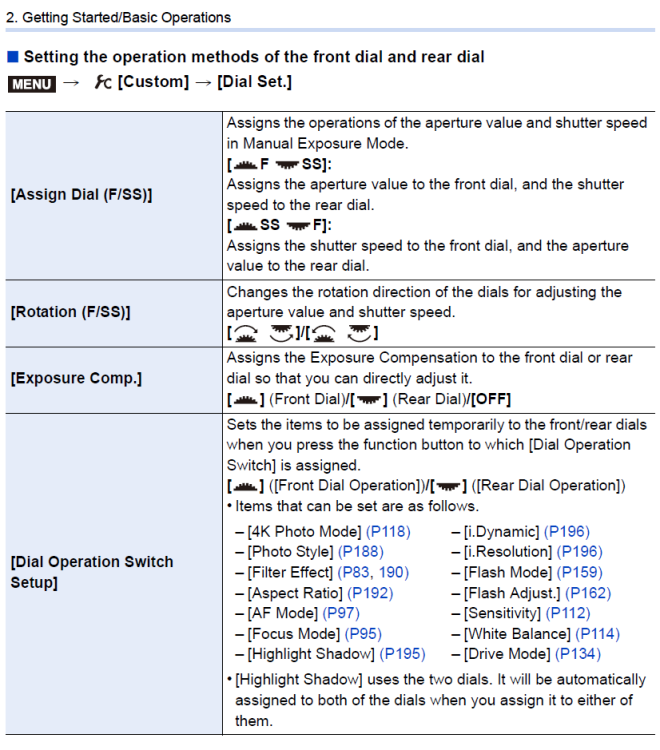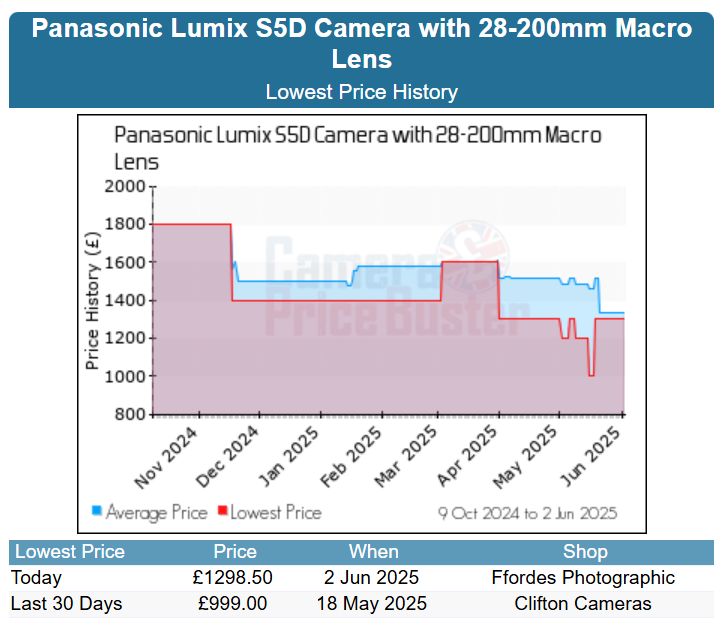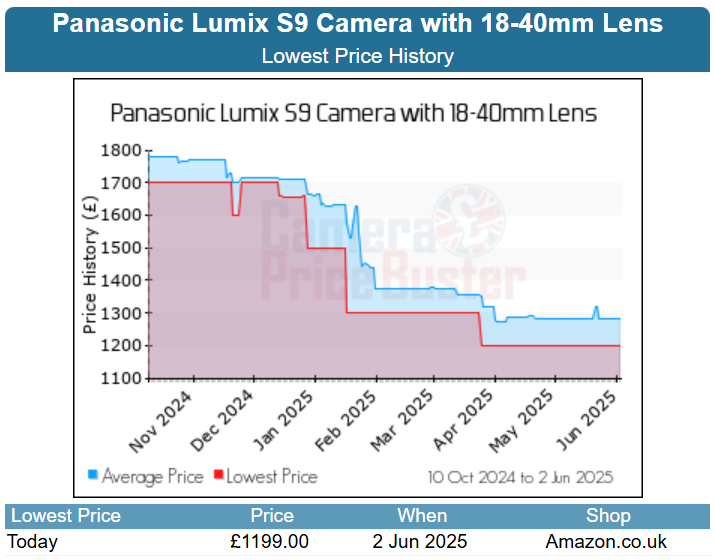
ac6000cw
Members-
Posts
675 -
Joined
-
Last visited
ac6000cw's Achievements

Frequent member (4/5)
518
Reputation
-
 ac6000cw reacted to a post in a topic:
Panasonic Firmware Update For S1II/S1IIE/S1RII Includes ARRI LogC3 Option
ac6000cw reacted to a post in a topic:
Panasonic Firmware Update For S1II/S1IIE/S1RII Includes ARRI LogC3 Option
-
 ac6000cw reacted to a post in a topic:
New travel film-making setup and pipeline - I feel like the tech has finally come of age
ac6000cw reacted to a post in a topic:
New travel film-making setup and pipeline - I feel like the tech has finally come of age
-
 kye reacted to a post in a topic:
New travel film-making setup and pipeline - I feel like the tech has finally come of age
kye reacted to a post in a topic:
New travel film-making setup and pipeline - I feel like the tech has finally come of age
-
I own and use both. The Oly 12-100mm F4 is a great lens, but it's much bigger and heavier than the Pana 14-140mm (560g versus 265g) - both on an OM-1: On an E-M1 ii/iii or OM-1 the 12-100mm supports Sync-IS which gives sublime video IS performance, but even with the relatively light (for that kind of camera) OM-1, the combo is 1.2 kg and somewhat front-heavy if you're using it handheld. A GH7 + 12-100mm would be nearly 1.4 kg. As a 'travel' lens, IMHO the combination of low weight and focal length range makes the 14-140mm almost perfect (other than in really low light, of course).
-
 ac6000cw reacted to a post in a topic:
New travel film-making setup and pipeline - I feel like the tech has finally come of age
ac6000cw reacted to a post in a topic:
New travel film-making setup and pipeline - I feel like the tech has finally come of age
-
 John Matthews reacted to a post in a topic:
Interested in the OM5ii for video? Get the E-M5iii instead.
John Matthews reacted to a post in a topic:
Interested in the OM5ii for video? Get the E-M5iii instead.
-
Interested in the OM5ii for video? Get the E-M5iii instead.
ac6000cw replied to John Matthews's topic in Cameras
The G9 ii is much larger and over 50% heavier than an OM-5: The obvious M43 alternative (larger and heavier, but not as bad as the G9 ii) is a used OM-1 - almost a steal at it's current sub-£1000 used prices in the UK for what you get in a rugged, weather-sealed, reasonably compact body. And of course as MrSMW said, there's the S9 at sub-£1000 new, but that's not weather-sealed nor has an EVF. It's the lack of a compact M43 body with PDAF, 4k50/4k60 and excellent video IBIS that drove me to buy an S9 - my first ever non-M43 MILC (after 13 years of buying M43 cameras and owning a sizeable lens M43 collection). That said, the E-M5iii/OM-5/OM-5ii series aren't really aimed at the video-user market - they are primarily lightweight, small, weather-sealed stills-orientated cameras with a bit of retro style (which is an OM-System self-confessed niche, really). -
 Sebastien reacted to a post in a topic:
How do you do video mode on the gx80?
Sebastien reacted to a post in a topic:
How do you do video mode on the gx80?
-
 ac6000cw reacted to a post in a topic:
New travel film-making setup and pipeline - I feel like the tech has finally come of age
ac6000cw reacted to a post in a topic:
New travel film-making setup and pipeline - I feel like the tech has finally come of age
-
As 'newfoundmass' suggested, use the touch screen, or (probably, for movie mode, as the manual doesn't make it clear if it applies to movies as well as stills) you can use/customise the functions of the front and rear dials:
-
 John Matthews reacted to a post in a topic:
How do you do video mode on the gx80?
John Matthews reacted to a post in a topic:
How do you do video mode on the gx80?
-
Something that's worth noting/remembering is that the 'Flkr Decrease' setting can be used to fix the shutter speed to 1/50, 1/60, 1/100 or 1/120 (180 degree shutter for 24/25, 30, 50 or 60 fps video) when you press the video record button in stills/photo mode (which forces the camera into 'P' mode, irrespective of what the stills/photo setting is). This workaround gives you shutter priority video with auto aperture and, if you want, auto-iso - it's 'photo' P mode with fixed shutter speed, basically. I find this really useful for 'instant hybrid' shooting - press the shutter button to take stills (in whatever mode you have set) or press the video record button to shoot shutter-priority video - no need to move the mode dial. From the manual:
-
 ac6000cw reacted to a post in a topic:
Camera prices – Have the Japanese taken leave of their senses?
ac6000cw reacted to a post in a topic:
Camera prices – Have the Japanese taken leave of their senses?
-
 ac6000cw reacted to a post in a topic:
New travel film-making setup and pipeline - I feel like the tech has finally come of age
ac6000cw reacted to a post in a topic:
New travel film-making setup and pipeline - I feel like the tech has finally come of age
-
 ac6000cw reacted to a post in a topic:
HUGE Panasonic discounts on the S9
ac6000cw reacted to a post in a topic:
HUGE Panasonic discounts on the S9
-
 ac6000cw reacted to a post in a topic:
David Lynch auction including Sony / Pentax / Canon cameras
ac6000cw reacted to a post in a topic:
David Lynch auction including Sony / Pentax / Canon cameras
-
 John Matthews reacted to a post in a topic:
HUGE Panasonic discounts on the S9
John Matthews reacted to a post in a topic:
HUGE Panasonic discounts on the S9
-
David Lynch auction including Sony / Pentax / Canon cameras
ac6000cw replied to Andrew Reid's topic in Cameras
Have a read of https://www.dpreview.com/articles/0518873678/hasselblad-lunar-an-act-of-lunacy It looks like it's a (rare, only 100 made) Hasselblad Lusso, based on the Sony A7R. -
Good point 🙂(it did go lower than £1299 recently from a some sellers - see the red line below). From https://www.camerapricebuster.co.uk/Panasonic/Panasonic-Lumix-S-Cameras/Panasonic-Lumix-S5D-Camera-with-28-200mm-Macro-Lens ...and for the S9 + 18-40 kit over the same period - https://www.camerapricebuster.co.uk/Panasonic/Panasonic-Lumix-S-Cameras/Panasonic-Lumix-S9-Camera-with-18-40mm-Lens:
-
It's similar in the UK (£1299). Personally I think Panasonic should offer the S9 + 28-200 as a reasonably compact FF travel cam kit (e.g. like Sony have the APS-C A6700 + 18-135mm kit).
-
 alsoandrew reacted to a post in a topic:
Sony FX2
alsoandrew reacted to a post in a topic:
Sony FX2
-
It's been on my wish list for a while... (I already own the 18-40 and 20-60, and I'm more likely to buy the more-compact APS-C Sigma 18-50mm F2.8 than the Pana 24-60).
-
 John Matthews reacted to a post in a topic:
HUGE Panasonic discounts on the S9
John Matthews reacted to a post in a topic:
HUGE Panasonic discounts on the S9
-
Re. S9 lens options (and being a 'zoom' rather than 'prime' person), now the 24-60 F2.8 is out, the obvious hole in Panasonic's full-frame small/light zoom range is a longer focal length companion to the 18-40 collapsible zoom e.g. a compact 35-90. (Like the 12-32 plus 35-100 pair they introduced to go with the smaller M43 cameras years ago). The current 'reasonably compact' FF zoom range mounted on the S9 (from the left, 18-40, 20-60, 28-200 and 24-60):
-
Panasonic Lumix G7 vs. S5II, used as camcorders
ac6000cw replied to John Matthews's topic in Cameras
I don't have a definitive answer, so this is an 'engineering opinion': For UHD (3840 x 2160) the G7 crops a slightly larger area out of the centre of the sensor, around 4100 pixels horizontally. Someone on Reddit estimated it to be 4130 x 2323 - see https://www.reddit.com/r/PanasonicG7/comments/3zfu0f/comment/cym5c9j/ - which is very close to 4096 x 2320 (and both dimensions of that are divisible by 16). If you take 4096 x 2320 and multiply each dimension by 15/16 you get 3840 x 2175, and I suspect because of the low scaling ratio it's most likely using 'nearest neighbour' re-sampling (line-skipping in camera speak) to generate UHD from it. So my educated guess is that its reading out a 4096 x 2320 region of the sensor, de-bayering it and then using line-skipping to down-sample it to 3840 x 2160. -
£2700 in the UK versus £2150 (£2000 with current cashback promotion) for A7 IV
-
I assume it was released too early, before the official announcement in a few minutes time...
-
Yes, and there's also a limit of 13 segments (only 5 in some of the older cameras). The segment size limit is nominally 4 GB, but because it uses variable bitrate (VBR) encoding the camera seems to assume the maximum bitrate when deciding how to split the files - hence they usually come out smaller than 4 GB.


